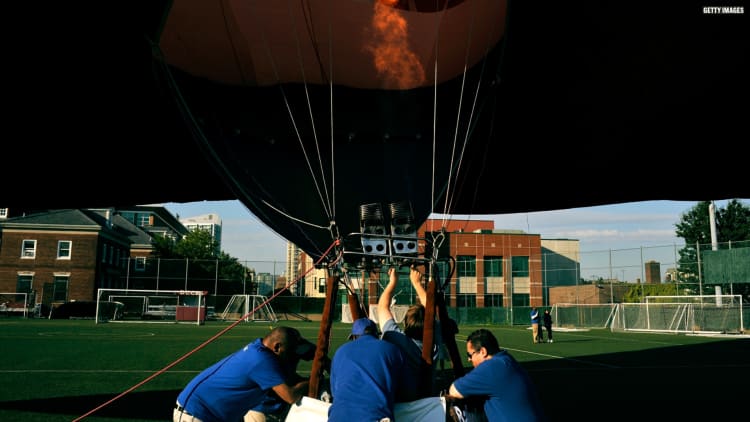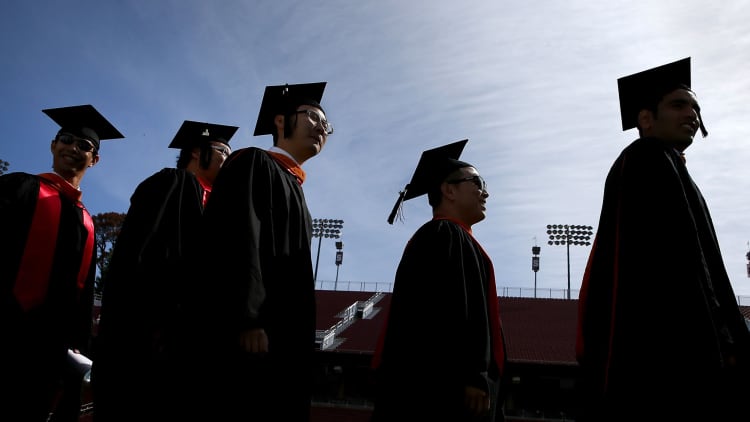For students, college applications are one more step in the tedious process of . But for colleges, applications serve as something else entirely: a revenue stream.
That's according to LendEdu, which conducted a study to find just how much colleges and universities can make in total from application fees and specifically from denials.
Using 2015-2016 college admissions data, LendEDU created a list of the 500 colleges with the highest enrolled-to-admitted ratios, 500 colleges that make the most in revenue from total applications and 500 colleges that make the most from declined applications.
Here are the top 10 schools that made the most from declined student applications, with their corresponding revenue from total applications, enrolled-to-admitted ratios and application fees:
University of California-Los Angeles
Revenue from declined applications: $5,367,180
Revenue from total applications: $6,488,300
Enrolled-to-admitted ratio: 35 percent
Application fee: $70
University of California-Berkeley
Revenue from declined applications: $4,590,110
Revenue from total applications: $5,522,510
Enrolled-to-admitted ratio: 42 percent
Application fee: $70
Stanford University
Revenue from declined applications: $3,632,130
Revenue from total applications: $3,824,730
Enrolled-to-admitted ratio: 80 percent
Application fee: $90
University of California-San Diego
Revenue from declined applications: $3,620,820
Revenue from total applications: $5,522,510
Enrolled-to-admitted ratio: 26 percent
Application fee: $70
University of Southern California
Revenue from declined applications: $3,419,440
Revenue from total applications: $4,153,920
Enrolled-to-admitted ratio: 32 percent
Application fee: $80

University of California-Santa Barbara
Revenue from declined applications: $3,325,700
Revenue from total applications: $4,937,520
Admission-to-enrollment ratio: 19 percent
Application fee: $70
University of California-Irvine
Revenue from declined applications: $3,080,770
Revenue from total applications: $5,024,250
Admission rate: 37 percent
Application fee: $70
Boston University
Revenue from declined applications: $2,952,800
Revenue from total applications: $4,382,480
Admission rate: 25 percent
Application fee: $80
Columbia University
Revenue from declined applications: $2,930,205
Revenue from total applications: $3,137,435
Enrolled-to-admitted ratio: 63 percent
Application fee: $85
University of Michigan-Ann Arbor
Revenue from declined applications: $2,863,950
Revenue from total applications: $3,884,775
Enrolled-to-admitted ratio: 45 percent
Application fee: $75
"It is important to remember, this money is revenue for the colleges, not profit," the study notes. "To ensure standards and reputations are upheld, colleges must ensure each application is thoroughly reviewed by a university employee — and rightfully so. The colleges transfer this cost onto the prospective student through application fees."
While revenue projections in the report are likely close to the actual revenue numbers, they may vary based on discounted and waived applications fees because of financial aid.
Students applying to college can to get prepared. Those already in school can use these to save money. And, to find out how much your school makes off of students it turns away, search here.
This is an update of a previously published story.
Like this story? Like CNBC Make It on Facebook!
Don't miss: 4 ways to save money during your first year of college
Video by Mary Stevens




